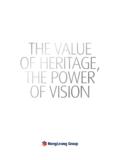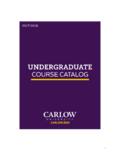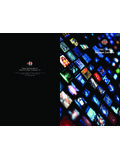Transcription of THE MUSEUM EFFECT: GAZING FROM OBJECT TO …
1 THE MUSEUM EFFECT: GAZING FROM OBJECTTO performance IN THE CONTEMPORARYCULTURAL- history MUSEUMV alerie Casey, Yale University, USAICHIM 03 New medias, new scenographies / Nouveaux m dias,nouvelles sc nographies Archives & MUSEUM Informatics Europe, 20032 AbstractAnalysis of the evolution of MUSEUM practices in terms ofLacan s concept of the Gaze demonstrates how processesof display in the cultural - history MUSEUM produce culturalknowledge. This paper offers a theoretical model of thevisitor- OBJECT relationship as a means to establish themuseum visitor and museal OBJECT in dynamicinterconnected roles. Their respective positions areevaluated in terms of the changing modes of museumpractice, which comprise three typologies: the legislatingmuseum, the interpreting MUSEUM , and the performingmuseum.
2 While these categories overlap, they also appearin historical chronology, where the modern art MUSEUM ofthe early 19th century is the legislating type, thepedagogically focused MUSEUM of post-WWII representsthe interpretive mode, and the contemporary living- history MUSEUM is classified as performing. Analysis ofthe social issues around these MUSEUM practices informsthe development of relevant and meaningful interactivetechnologies for visitors in the contemporary research has focused on Western cultural -historymuseums, often specifically American museums . Theapplicability of this theory of the viewer to museumsoutside the is the subject of current : cultural - history MUSEUM , the Gaze, Lacan, exhibition design, narrative, cultural memory, interactive technologiesMuseum authority and the ways of seeingThe MUSEUM acquires social authority by controlling ways of seeing, and the objectsaround which museal vision is directed gather meaning from their context within themuseum.
3 In MUSEUM Without Walls, Malraux (1967) describes the MUSEUM effect wherethe very placement of the OBJECT within the MUSEUM creates its importance and Barbara Kirshenblatt-Gimblett (1998) echoes this assertion: [in themuseum] objects are not found, they are made. museums do not just gather valuableobjects but make objects valuable by gathering them. The MUSEUM is able to produceICHIM 03 New medias, new scenographies / Nouveaux m dias,nouvelles sc nographies Archives & MUSEUM Informatics Europe, 20033cultural knowledge by organizing how the materials it authorizes are seen by controllingthe Gaze as analytic frameworkFor this analysis, the Gaze is used as the conceptual framework with which to examine theevolution of MUSEUM practices.
4 In Lacanian terms, the Gaze is the act of involuntaryparticipation in a culturally constructed, visual discourse where there is no unmediated,pure relationship between a Subject and the OBJECT of its view. Every visual exchangecarries the weight of environmental, cultural , and physical conditions. Art historianNorman Bryson (1988: 91) describes the Gaze as requiring a collective submission of the retinal experience to the socially agreed description(s) of an intelligible world. At thecore of the Gaze is the presupposition that the visual world is a cultural construction inwhich all social beings participate.
5 The Subject OBJECT relationship is always mediated bya screen, a collection of signs and signifiers given by social custom that represent theObject. Because the screen is merely an image of the OBJECT , not the OBJECT itself, theobject of the Gaze can never be known directly. In psychoanalytic terms, the OBJECT ofdesire always lies just beyond the reach of the viewer and is always intermediated by thescreen. The Subject is perpetually propelled toward it, seeking but never notion of the screen applies to MUSEUM practice in two ways. On one level, thescreen quite literally is the curatorial information provided in label text, the design of theexhibition, the narrative on an audio guide.
6 Each of these devices and techniques ofexhibition design aims to provide context for the visitor, yet each also distances theviewer from the art or artifact by predetermining its cultural value. In even the mostinformed or egalitarian environment, the prescribed curatorial meaning manages thevisitor s understanding. The second manifestation of the screen concerns desire. Inabstract terms, the desire that is linked to the unattainable OBJECT motivates the aestheticand intellectual pursuit. Why look over and over again if not propelled by a deepunsatisfied curiosity? The way the Subject craves apprehension is encapsulated in the nowfamiliar story of the throngs of visitors who visited the Louvre to view the space left afterICHIM 03 New medias, new scenographies / Nouveaux m dias,nouvelles sc nographies Archives & MUSEUM Informatics Europe, 20034the theft of the Mona Lisa (Leader, 2003).
7 Their curiosity was compounded by the noveltyof a major art theft, but visitors also went to the naked space as if through it they might beable to comprehend the Mona Lisa, painting present or not. This example demonstratesthat the cultural screen remains vivid even when the OBJECT itself characteristic of the Gaze is its reversibility. Lacan (1998: 106) writes, in thescopic field, the gaze is outside, I am looked at, that is to say, I am a picture. The Gazehas the effect of alienating the Subject through this reversibility. The viewer s centricity isdislodged when another enters his field, in this case the OBJECT of art or artifact.
8 Now thewatcher is being watched. The spectator is transformed into the spectacle. Reversibilityelicits self-consciousness in the viewer. This awareness of the self motivates the Subjectto maintain appropriate social behavior. As with Foucault s critique of power structuresoutlined in the metaphorical Panopticon (1979), social conduct is a self-regulatingprocess. In Foucaultian terms, the MUSEUM is an institute of discipline which indoctrinatesappropriate behavior in the viewer. Foucault s critique reinforces the notion of themuseum as a place in which cultural values are authorized and specific behaviorsencouraged as a means to produce socially acquired codes observed in the Subject- OBJECT relationship are made more clear by mappingthe Gaze to three major trends in the history of MUSEUM practice.
9 Specifically, theevolution of MUSEUM processes of display illustrates how the primacy of the museumexperience has shifted from OBJECT to typologies: Legislating and InterpretingMuseum practice can be distilled into three major typologies. Prior to the 19th century,the MUSEUM was considered a container for collections of objects. The museumresearched and preserved curios, exotica, rare, and sanctified objects (Weil, 1995). Theaim of the legislating MUSEUM was to present the paragons of the aesthetic and intellectualpursuit, to create a venue for display not debate. The authority of the MUSEUM was enactedthrough selection and presentation of its objects.
10 Without contextual information thatICHIM 03 New medias, new scenographies / Nouveaux m dias,nouvelles sc nographies Archives & MUSEUM Informatics Europe, 20035explained why an OBJECT appeared in the MUSEUM , or its relationship to the objects aroundit, the legislating MUSEUM created a distinct and distant relationship between OBJECT andviewer. This visual system can be articulated with a simple sketch.[Figure 1: Legislating MUSEUM diagram]In this diagram of the legislating MUSEUM , the first frame represents a supposedlyunmediated and direct experience between subject S and OBJECT O. However, the linkbetween subject and OBJECT is not uninterrupted.





